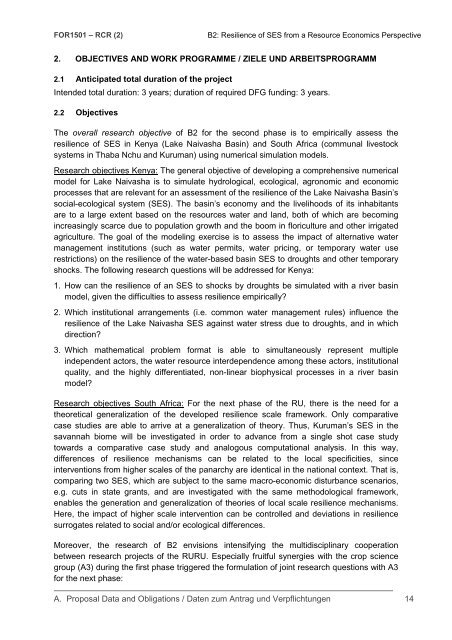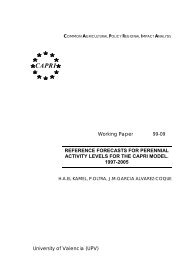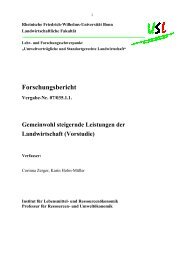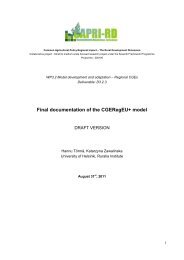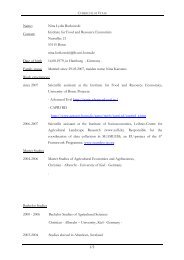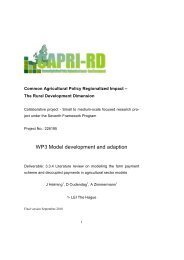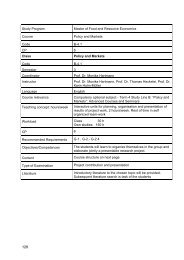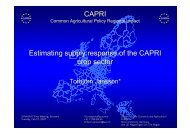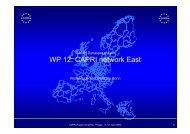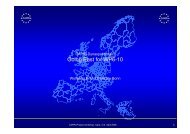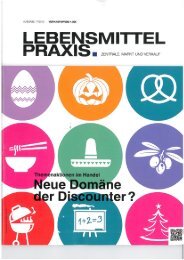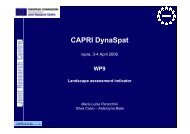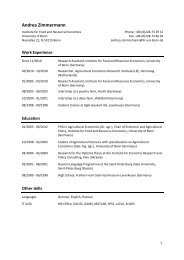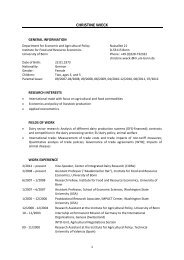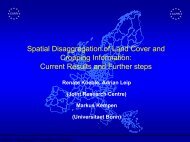Research proposal of sub-project B2 for second phase - Institut für ...
Research proposal of sub-project B2 for second phase - Institut für ...
Research proposal of sub-project B2 for second phase - Institut für ...
You also want an ePaper? Increase the reach of your titles
YUMPU automatically turns print PDFs into web optimized ePapers that Google loves.
FOR1501 – RCR (2)<br />
<strong>B2</strong>: Resilience <strong>of</strong> SES from a Resource Economics Perspective<br />
2. OBJECTIVES AND WORK PROGRAMME / ZIELE UND ARBEITSPROGRAMM<br />
2.1 Anticipated total duration <strong>of</strong> the <strong>project</strong><br />
Intended total duration: 3 years; duration <strong>of</strong> required DFG funding: 3 years.<br />
2.2 Objectives<br />
The overall research objective <strong>of</strong> <strong>B2</strong> <strong>for</strong> the <strong>second</strong> <strong>phase</strong> is to empirically assess the<br />
resilience <strong>of</strong> SES in Kenya (Lake Naivasha Basin) and South Africa (communal livestock<br />
systems in Thaba Nchu and Kuruman) using numerical simulation models.<br />
<strong>Research</strong> objectives Kenya: The general objective <strong>of</strong> developing a comprehensive numerical<br />
model <strong>for</strong> Lake Naivasha is to simulate hydrological, ecological, agronomic and economic<br />
processes that are relevant <strong>for</strong> an assessment <strong>of</strong> the resilience <strong>of</strong> the Lake Naivasha Basin’s<br />
social-ecological system (SES). The basin’s economy and the livelihoods <strong>of</strong> its inhabitants<br />
are to a large extent based on the resources water and land, both <strong>of</strong> which are becoming<br />
increasingly scarce due to population growth and the boom in floriculture and other irrigated<br />
agriculture. The goal <strong>of</strong> the modeling exercise is to assess the impact <strong>of</strong> alternative water<br />
management institutions (such as water permits, water pricing, or temporary water use<br />
restrictions) on the resilience <strong>of</strong> the water-based basin SES to droughts and other temporary<br />
shocks. The following research questions will be addressed <strong>for</strong> Kenya:<br />
1. How can the resilience <strong>of</strong> an SES to shocks by droughts be simulated with a river basin<br />
model, given the difficulties to assess resilience empirically?<br />
2. Which institutional arrangements (i.e. common water management rules) influence the<br />
resilience <strong>of</strong> the Lake Naivasha SES against water stress due to droughts, and in which<br />
direction?<br />
3. Which mathematical problem <strong>for</strong>mat is able to simultaneously represent multiple<br />
independent actors, the water resource interdependence among these actors, institutional<br />
quality, and the highly differentiated, non-linear biophysical processes in a river basin<br />
model?<br />
<strong>Research</strong> objectives South Africa: For the next <strong>phase</strong> <strong>of</strong> the RU, there is the need <strong>for</strong> a<br />
theoretical generalization <strong>of</strong> the developed resilience scale framework. Only comparative<br />
case studies are able to arrive at a generalization <strong>of</strong> theory. Thus, Kuruman’s SES in the<br />
savannah biome will be investigated in order to advance from a single shot case study<br />
towards a comparative case study and analogous computational analysis. In this way,<br />
differences <strong>of</strong> resilience mechanisms can be related to the local specificities, since<br />
interventions from higher scales <strong>of</strong> the panarchy are identical in the national context. That is,<br />
comparing two SES, which are <strong>sub</strong>ject to the same macro-economic disturbance scenarios,<br />
e.g. cuts in state grants, and are investigated with the same methodological framework,<br />
enables the generation and generalization <strong>of</strong> theories <strong>of</strong> local scale resilience mechanisms.<br />
Here, the impact <strong>of</strong> higher scale intervention can be controlled and deviations in resilience<br />
surrogates related to social and/or ecological differences.<br />
Moreover, the research <strong>of</strong> <strong>B2</strong> envisions intensifying the multidisciplinary cooperation<br />
between research <strong>project</strong>s <strong>of</strong> the RURU. Especially fruitful synergies with the crop science<br />
group (A3) during the first <strong>phase</strong> triggered the <strong>for</strong>mulation <strong>of</strong> joint research questions with A3<br />
<strong>for</strong> the next <strong>phase</strong>:<br />
A. Proposal Data and Obligations / Daten zum Antrag und Verpflichtungen 14


